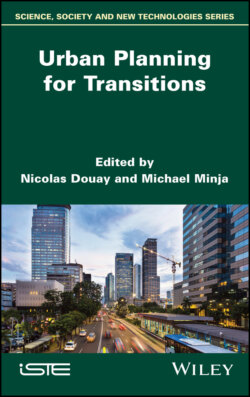Читать книгу Urban Planning for Transitions - Группа авторов - Страница 13
1.3. Rotterdam Resilience Strategy – Ready for the 21st Century 1.3.1. Methodology
ОглавлениеThe city formulated a clear methodology to define its resilience strategy and vision. The city’s suggestions came after considering the site analysis and the challenges that faced the city. They ended up formulating an integrated vision that would include all the stakeholders and also address the stakeholders’ requirements. To be able to do so, a number of steps will be compulsory. The strategy referred to the infamous 100 Resilience Cities program, which had already laid out the necessary steps and methodology to create and achieve resilient cities. These steps are outlined below (source: Rotterdam Resilience Strategy):
1 i) An assessment of the current situation and defining the city’s challenges: using a list of the main fields of activity in the city in which it includes 12 aspects, that should be covered by the resilience strategy. These aspects are categorized in four sections, which are:– health and well-being;– economy and society;– infrastructure and environment;– leadership and strategy.
2 ii) Review the main transitions in development:– the economy of the 21st Century (“next economy”): simultaneous transitions from fossil fuels to renewable forms of energy, from analogue to digital and from a linear extractive economic model to a circular sustainable model;– climate change: rising sea levels, unpredictable river flow volumes, more frequent and more intense rainfall, subsidence and heat stress;– digitization: exponential rate of technological progress and development, characterized by the Internet of Things, Smart City and Big Data. Despite it presenting plenty of opportunities, it also increased the levels of dependency and vulnerability in the field of security and privacy;– new democracy: individualization, an increase in self-organization, assertive citizens and consumers, better information, new roles for government and utility services, as well as the emergence of the “prosumers” (people who are simultaneously consumers and producers);– unknown developments: the ultimate form of resilience needs to deal with unexpected development or changes that might happen and turn out quite differently to what was anticipated.
3 iii) Defining action areas: based on the analysis and the city challenges, the city decided to formulate its vision and goals around four main areas: citizens, infrastructure, governance and economy.
4 iv) Defining the resilience lens: based on the seven qualities of resilience, that is: reflective, resourceful, robust, redundant, flexible, inclusive and integrated.
5 v) Defining focus areas: based on the city’s challenges, which are: social cohesion and education; energy transition; climate adaptation; cyber use and security; critical infrastructure; changing urban governance (changes in society and democracy, driven by moving away from the top–down hierarchy to a more bottom–up approach with much greater levels of community and citizen involvement); a changing economy that is driven more by sharing and technological innovation “Next Economy”.
6 vi) Define the resilience goals: based on the city analysis (12 aspects);
7 vii) Define actions and related actions: connected to the vision and objective of each goal.
